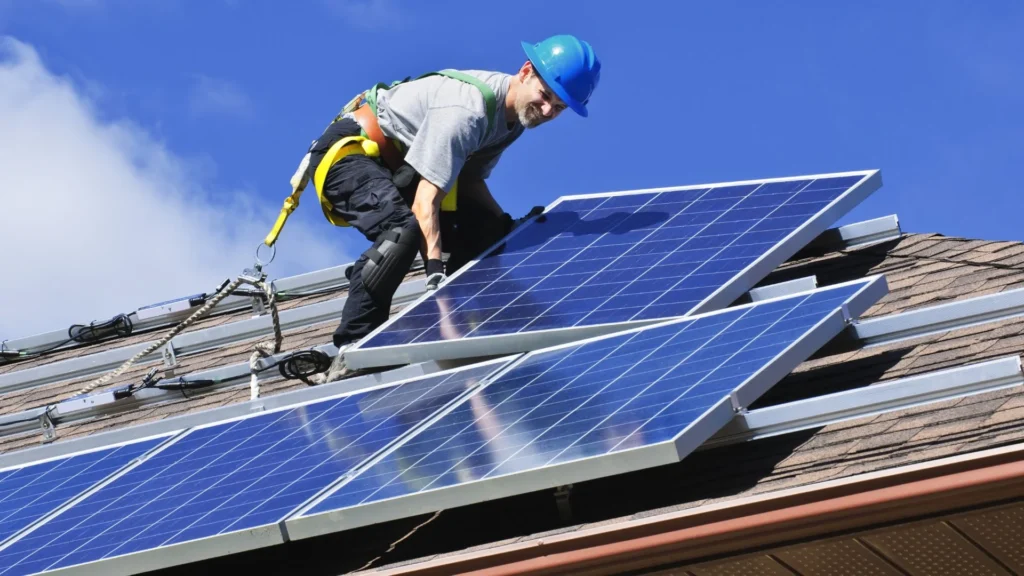
Installing a residential solar panel system is a significant investment that can provide homeowners with substantial savings on their energy bills. However, many individuals are often hesitant to make the switch due to concerns about the time it takes to install the system. The duration of the installation process varies depending on several factors, including pre-installation preparation, equipment procurement, and the installation itself.
We must consider all aspects of the installation process to better understand how long it takes to install a residential solar panel system. From start to finish, each step requires meticulous planning and execution to ensure that everything runs smoothly. In this article, we will explore various factors affecting solar panel installation time and guide readers through the process, from choosing an installer to enjoying the benefits of renewable energy in their homes.
The duration of the installation process for a photovoltaic energy generation set up in a household is influenced by various factors. One such factor is the size of the solar panel system being installed. A larger system will require more time and resources to install than a smaller one, as it involves mounting more panels on the roof or in the yard, connecting them to an inverter, and wiring them to the electrical grid.
Another factor that affects installation time is the complexity of the installation itself. This includes factors such as whether your home’s electrical infrastructure needs upgrading or if any obstacles like trees or buildings might affect solar panel placement. The position of your home also plays a role, with installations taking longer in areas with harsh weather conditions or difficult terrain.
Thirdly, local regulations may impact how long it takes to install residential solar panels. Some cities and states have specific requirements for permits and inspections before solar panels can be installed on homes. This can add extra time to the overall process.
Lastly, finding qualified and experienced contractors specializing in solar panel installations can also affect how long it takes to complete an installation project. It’s important to work with professionals with experience installing systems similar in size and complexity to yours, as this will ensure everything is done correctly and efficiently.
In conclusion, several factors influence how long a residential solar panel system installation project takes to be completed successfully. These include things like system size, the complexity of the installation process itself (including terrain), local regulations for permits/inspections required beforehand from authorities before construction starts on site, finding skilled professionals capable enough with experience installing similar systems prior experience working within this industry sectors should always be taken into consideration when choosing contractors because they can make all difference between success or failure during this exciting transition period towards renewable energy sources!
Several crucial steps must be taken before installing a residential solar panel system. The first step is conducting a site assessment to determine if the location is suitable for solar energy production. Next, obtaining the necessary permits and completing the required paperwork is essential to ensure compliance with regulations and safety standards. Lastly, exploring financing options and incentives will help make installing a solar panel system more affordable for homeowners. Proper pre-installation preparation can lead to a smoother and more efficient installation process.
Evaluating the site is crucial in determining whether solar energy can be harnessed effectively for domestic use. This assessment typically involves a physical survey of the property to determine factors such as the orientation and slope of the roof, shading patterns, and available space. Information about local weather patterns and utility rates is also gathered to ensure that solar energy will be a viable option for long-term savings.
During this phase, photovoltaic (PV) professionals utilize sophisticated tools such as shade analysis software to accurately assess how much sunlight hits each area of the proposed location. This helps them to design an optimal system that maximizes output while minimizing costs. The result is a customized solution tailored specifically to meet the unique needs of each homeowner and their property.
Ensuring compliance with local regulations and obtaining the necessary permits and paperwork is critical to successfully implementing solar energy for domestic use. The process can be time-consuming, but ensuring that the installation complies with safety standards, building codes, and zoning laws is essential. Permitting requirements vary by location, so it is crucial to research the specific regulations in your area.
To make the permitting process smoother, consider hiring a professional solar installer with experience dealing with local authorities. They will know the permit application process and can help you navigate potential roadblocks. Additionally, some installers offer services to complete all necessary paperwork on your behalf. By having an expert handle this installation process, you can focus on other aspects of going solar while ensuring compliance with all necessary regulations.
The section currently focuses on exploring financial options and incentives available to support the implementation of solar energy for households. While investing in a residential solar panel system may require a high upfront cost, various financing options can make it more accessible for homeowners. These include solar loans, leases, and power purchase agreements (PPAs). Solar loans allow homeowners to borrow money to finance their solar installation and repay the loan over time through fixed monthly payments. Leases and PPAs offer an alternative payment structure where homeowners pay a fixed monthly fee to lease or purchase the electricity generated by their solar panels.
In addition to financing options, numerous incentives are available at the federal, state, and local levels that can significantly reduce the cost of installing a residential solar panel system. The federal government offers a 26% tax credit for homeowners who install solar energy systems before December 31, 2022. Some states also provide additional tax credits or rebates for installing solar panels. Furthermore, many utility companies offer net metering programs that allow homeowners with solar panels to sell excess energy back to the grid at retail rates. These financial options and incentives can help make residential solar panel systems more affordable and accessible for those looking to transition towards clean energy in their homes.
Selecting an appropriate solar panel installer is crucial for households transitioning to renewable energy. The installation process requires specialized skills and knowledge that not all contractors possess. Hence, choosing the right installer can make the difference between a smooth and efficient installation process and one plagued with errors and delays. A reputable solar panel installer should have extensive experience in installing residential systems, sound references from satisfied customers, and excellent ratings on relevant review sites.
Before selecting an installer, conducting thorough research on potential candidates is advisable. This includes checking their qualifications, licenses, certifications, and insurance policies. You may also want to inquire about their warranty policies and any maintenance or repair services they offer after installation. Additionally, look for installers who use high-quality materials and equipment that meet industry standards.
It is also important to consider the cost of hiring a solar panel installer versus doing it yourself (DIY). While DIY installations may seem more affordable initially, they can be risky if you lack experience or make mistakes during installation. A professional installer will ensure everything is installed correctly and according to safety regulations while minimizing risks of injury or damage to property. Moreover, many reputable installers offer financing options that can help reduce upfront costs.
Finally, when choosing a solar panel installer for your home system project, take your time deciding instead of rushing into anything impulsively. Do not hesitate to ask questions regarding their work processes or request written quotes for comparison purposes from multiple providers before making up your mind. Investing in renewable energy through solar panels can significantly reduce your monthly electricity bill while decreasing your carbon footprint over time so choose wisely!
Designing a solar panel system for residential use involves several key considerations critical to the project’s success. Customization and optimization are essential to ensure the system is tailored to meet specific energy needs and goals. Panel placement and orientation play a significant role in maximizing energy production, while wiring and inverter configuration helps to ensure seamless integration with existing electrical systems. A meticulous approach to designing a solar panel system can help homeowners achieve optimal efficiency, cost-effectiveness, and overall performance.
The process of tailoring and refining a solar energy solution to meet the unique needs of a particular household involves a thorough examination and optimization of key components such as the photovoltaic cells, inverters, wiring, and monitoring systems. The customization process is crucial because it ensures that the solar panel system is designed to meet specific energy requirements while considering roof orientation, shading patterns, local weather conditions, and electricity usage patterns.
Optimization also plays an important role in ensuring maximum efficiency and long-term savings. This includes selecting the right size and type of solar panels, optimizing their placement on the roof or ground, and selecting the most efficient inverters, cables, and connectors to minimize power losses during transmission. Additionally, it involves incorporating battery storage solutions for storing excess energy generated during peak hours for use during off-peak hours or emergencies. Overall customization and optimization are critical steps in designing a solar panel system that delivers reliable renewable energy while maximizing financial benefits for homeowners.
After customizing and optimizing a solar panel system to meet specific energy needs, the next crucial step is to determine the placement and orientation of the panels. Proper panel placement ensures maximum exposure to sunlight throughout the day, while correct orientation guarantees that panels are positioned at an angle that captures as much sunlight as possible. These factors significantly influence the efficiency and effectiveness of a residential solar panel system.
Here are four essential considerations for proper panel placement and orientation:
Considering these factors during installation ensures homeowners get their money’s worth from their solar energy investment while reducing their carbon footprint.
Efficient wiring and proper inverter configuration are crucial components for maximizing the energy yield of a solar panel setup. Wiring connects all panels, allowing them to work as one cohesive unit, while inverters convert the DC power produced by the panels into AC power usable by household appliances. Poor wiring and inverter configuration can lead to significant energy losses, which translates to lower savings on electricity bills and reduced environmental benefits.
To ensure the optimum performance of a solar panel system, it is important to have an experienced technician handle the wiring and inverter configuration. This involves determining the right size and type of inverters required for the specific panel setup and ensuring that wires are properly sized, protected from damage, and routed correctly to minimize resistance loss. With efficient wiring and proper inverter configuration, homeowners can expect their solar panel system to generate more electricity than poorly configured ones with inefficient wire connections – ultimately leading to a more sustainable future.
Acquiring the necessary equipment and materials for a standard residential solar panel setup involves carefully selecting components that meet the required specifications and ensuring their timely delivery. Procuring equipment and materials is one of the most important steps in the installation process, as it ensures that the system is built with high-quality compatible components. The following are some considerations when procuring equipment and materials for a residential solar panel system:
Procuring equipment and materials for a residential solar panel system requires careful consideration of several factors, such as vendor reputation, component sizing, compatibility, and certifications. By taking these steps into account during procurement processes, homeowners can ensure they receive quality equipment delivered on time that will work together seamlessly with their home’s unique energy needs — providing them peace of mind while reducing dependence on fossil fuels through renewable energy solutions.
This section involves installing a complete solar energy solution for households, including the various steps in setting up and connecting different components to create a functional system capable of generating renewable energy. The first step is to attach racking or mounting systems onto the rooftop where the panels will be installed. This ensures that the panel’s angle and orientation are optimal in capturing maximum sunlight throughout the day. Once these are secured, solar panels can be attached to them using specialized bolts, ensuring they are firmly fixed onto the roof while allowing for slight movements.
After securing solar panels onto the roof, electricians connect them through wiring and conduits. Then, inverters are installed near electrical boxes or meters near where electricity is consumed. These convert DC electricity from solar panels into AC electricity that can be used to power household appliances and electronics. Safety switches and breakers must also be set up to ensure that any issues with electrical connections or overloading can be addressed promptly.
Finally, after all, connections have been made and tested thoroughly by experienced technicians or installers (in compliance with local regulations), homeowners can begin enjoying their new renewable energy source! Depending on how big your solar panel system is, it usually takes around 1-3 days for installations to be completed from start to finish.
Overall, installing a residential solar panel system requires several careful steps involving professionals who understand how each component works together as a functioning unit. However, once fully installed and properly maintained over time – these systems provide clean energy without relying on fossil fuels while helping reduce carbon footprint!
Testing and commissioning a solar energy solution is crucial to ensure that the system functions efficiently and safely, allowing homeowners to benefit from renewable energy while reducing their environmental impact. The testing phase involves checking the quality of materials used in assembling the solar panel components, including wiring, batteries, inverters, and other peripherals. Once all equipment is installed and wired properly, a series of tests are conducted to evaluate its performance under different conditions. These tests include measuring voltage output and calculating current capacity under varying light intensities.
The next step in commissioning is ensuring that the system meets safety standards by following regulatory guidelines set forth by local authorities. This includes verification of electrical grounding systems which prevent shocks or electrocution hazards and ensuring proper labeling on all equipment according to safety codes. Additionally, any required permits must be obtained before the system can be turned on.
One final aspect of commissioning involves training homeowners on operating their new solar panel system and troubleshooting any potential issues that may arise during use. This ensures that they are fully equipped with knowledge about how their investment works so they can make informed decisions about usage patterns and maintenance schedules.
In conclusion, testing and commissioning are essential in ensuring that a residential solar panel system operates at optimal levels while meeting safety requirements set forth by local authorities. It also gives homeowners an understanding of how their new investment works so they can make informed decisions about usage patterns and maintenance schedules going forward. By investing in renewable energy solutions such as solar panels, homeowners can reduce their carbon footprint while enjoying long-term cost savings on utility bills – a win-win situation for both individuals and society.
Maintenance and upkeep are essential aspects of owning a residential solar panel system. This subtopic covers the three key areas of maintenance: cleaning and inspection, repairs and replacements, and monitoring and optimization. Regular cleaning and inspection ensure that the panels function optimally while repairs and replacements address any issues. Monitoring and optimization allow homeowners to track their energy production levels, identify potential problems early on, and make adjustments to maximize efficiency.
Inspecting and cleaning solar panels is crucial in ensuring their optimal efficiency and longevity. Over time, dust, dirt, debris, and bird droppings can accumulate on the surface of solar panels, reducing the amount of sunlight that reaches the photovoltaic cells. This reduction in sunlight can significantly drop power output, which translates to lower energy savings for homeowners.
Regular cleaning and inspection are necessary to ensure that solar panel systems continue to operate at peak efficiency levels. Here are four essential steps to follow when cleaning and inspecting residential solar panel systems:
By following these steps regularly, homeowners can maintain their solar panel systems’ performance over time while extending their lifespan for years.
Ensuring the proper functioning of solar panel systems requires periodic repairs and replacements, which are crucial steps in maintaining their efficiency and performance. Over time, certain solar panel system components may wear out or become damaged due to various reasons, such as weather conditions, mechanical stress, or electrical overload. Therefore, performing regular inspections and maintenance checks is important to identify any issues needing attention.
In some cases, minor repairs can be carried out by homeowners themselves without needing professional assistance. However, more complex repairs require specialized knowledge and skills only trained professionals possess. For instance, replacing a faulty inverter or a broken panel requires technical expertise and experience. Thus, hiring certified technicians with experience working with solar panel systems for any major repair work is recommended. By doing so, homeowners can ensure their solar panel system’s longevity while maximizing its energy production potential.
Regular monitoring and optimization of solar panel performance are critical for maximizing energy production efficiency and identifying areas for improvement. Utilizing software that tracks real-time data from the panels, homeowners can closely monitor their system’s output and ensure it performs at peak capacity. This information can also identify any potential issues with the system, allowing for prompt repairs or adjustments.
Furthermore, by analyzing this data over time, homeowners can make informed decisions about optimizing their solar panel systems. For example, adjusting the tilt angle of the panels based on seasonal changes in the sun’s position can increase energy production efficiency. Regular monitoring and optimization help maximize energy production and ensure that homeowners get the most out of their investment in solar power technology.
Appreciating the advantages of transitioning to solar energy in residential settings is essential for homeowners who want to change their energy consumption. By installing a solar panel system, households can reduce their reliance on fossil fuels and decrease their carbon footprint. Moreover, they can lower their electricity bills by generating and selling any excess energy back to the grid. This saves money and provides an opportunity for homeowners to contribute towards sustainable living.
Another key benefit of solar panels is that they require very little maintenance compared to other renewable sources, such as wind turbines or hydroelectric dams. Once installed, solar panels have no moving parts that can break down or wear out over time, requiring minimal upkeep. However, regular cleaning may be necessary depending on the location and weather conditions of the area where the panels are installed. Overall, this makes solar energy a reliable and low-maintenance renewable source for residential properties.
Furthermore, with technological advancements in battery storage systems, homeowners can now store excess electricity generated during peak hours during off-peak periods when electricity prices are higher. This means households can become more self-sufficient by relying less on external power sources while improving their overall financial savings. In addition, battery storage systems provide backup power in case of blackouts or emergencies, enhancing household security and safety.
Transitioning to solar energy has numerous benefits for residential properties, including reduced reliance on traditional sources of electricity generation; lower cost utility bills; low-maintenance requirements; improved self-sufficiency through battery storage technology; enhanced household security; and contribution towards sustainable living practices. As more people recognize these benefits and invest in solar panel systems for their homes, we move closer to creating a greener future powered by renewable resources like the sun’s rays.
In conclusion, installing a residential solar panel system is a complex process that requires careful planning, preparation, and implementation. The time required for installation can vary depending on various factors such as the system’s size, design complexity, availability and procurement of equipment and materials, and expertise of the installer.
To ensure timely project completion, choosing an experienced and reliable solar panel installer who can handle all aspects of the installation process with precision and efficiency is important. Proper maintenance and upkeep are also crucial for ensuring optimal performance and longevity of the solar panel system.
By investing in a residential solar panel system, homeowners can enjoy numerous benefits, such as reduced energy bills, increased property value, lower carbon footprint, and energy independence. With proper planning and execution by an expert installer, installing a solar panel system can be a worthwhile investment that pays off in both financial savings and environmental sustainability.
The cost of a residential solar panel system varies depending on several factors. The size of the system, the type and quality of panels used, and any additional equipment, such as inverters or batteries, can all impact the overall cost. Additionally, the location of the home and available incentives or rebates can also affect pricing. A residential solar panel system can average range from $15,000 to $35,000 before any applicable incentives or tax credits. While this initial investment may seem steep, installing a solar panel system can provide long-term savings on energy bills and reduce reliance on non-renewable energy sources. Overall, it is important for homeowners to carefully consider their individual needs and circumstances when determining whether investing in a solar panel system is financially feasible.
Residential solar panel systems can be installed on various roof types, including flat, sloped, shingle, metal, and tile roofs. However, the installation process may vary depending on the type of roof and its condition. A thorough roof inspection is necessary to determine its structural integrity and suitability for solar panel installation. Additional support structures or modifications may be required to ensure a safe and secure installation. Hiring experienced professionals knowledgeable in solar panel installation is important to ensure the system is installed correctly and safely. Homeowners can enjoy the benefits of renewable energy from their residential solar panel system for many years by choosing the right professionals and following all the necessary procedures.
In recent years, solar panels have become increasingly popular as a renewable energy source. One important factor to consider when investing in solar panels is their lifespan. On average, solar panels can last anywhere from 25-30 years with proper maintenance and care. However, some manufacturers offer warranties for up to 25 years, indicating that the panels are expected to function effectively during this time period. Factors such as weather conditions and wear and tear can also affect the longevity of solar panels. It is crucial to have a reliable installer who can assess the condition of your system periodically and make necessary repairs or replacements if needed. Understanding solar panels’ lifespan is essential when investing in renewable energy sources for your home or business.
A residential solar panel system’s ability to generate electricity depends on various factors, including the system’s size, the panels’ orientation and tilt, and weather conditions. On average, a 5 kW solar panel system can generate around 20-25 kWh daily in sunny regions. This energy can power a household’s daily needs, including lighting, heating/cooling appliances, and electronics. However, it should be noted that energy production may vary based on factors such as shade from nearby trees or buildings and seasonal changes in sunlight availability. Despite this variability, investing in a residential solar panel system can provide financial savings while reducing reliance on non-renewable energy sources.
The government offers various incentives and rebates for homeowners who install solar panel systems in their homes. These incentives aim to promote using renewable energy sources to reduce carbon emissions and protect the environment. The federal government provides a tax credit of up to 26% of the total cost of a residential solar panel system, while some states offer additional tax credits or cash rebates. Additionally, some utility companies offer net-metering programs that allow homeowners to earn credits on their electricity bills for excess energy generated by their solar panels. These incentives can significantly reduce the initial cost of installing a solar panel system and make it more affordable for homeowners seeking to transition toward sustainable energy sources.
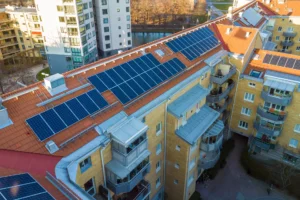
Can I Install Solar Panels On A Rental Property? Share: Facebook Twitter LinkedIn Pinterest As more individuals and businesses seek to reduce their carbon footprint,

What Is The Difference Between On-Grid And Off-Grid Solar Systems? Share: Facebook Twitter LinkedIn Pinterest Solar power is becoming increasingly popular for individuals and businesses
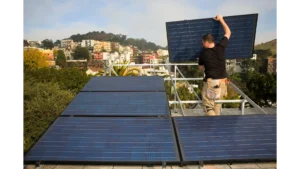
Best Mounting Options for Solar Panels: A Comprehensive Guide Share: Facebook Twitter LinkedIn Pinterest Solar energy is a renewable and sustainable source of power that

Will I Need To Get A New Roof Before Installing Solar Panels? Share: Facebook Twitter LinkedIn Pinterest As homeowners and businesses strive to reduce their
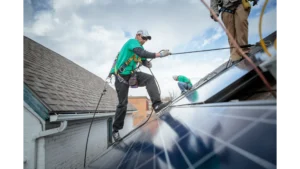
How To Find A Good Solar Panel Installer? Share: Facebook Twitter LinkedIn Pinterest Good Solar Panel Installer Solar panels have become popular for homeowners looking
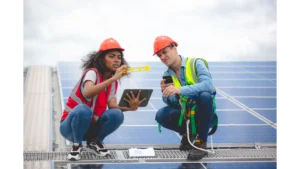
How Much Space Do I Need On My Roof To Install Solar Panels? Share: Facebook Twitter LinkedIn Pinterest Do I have enough Space on My